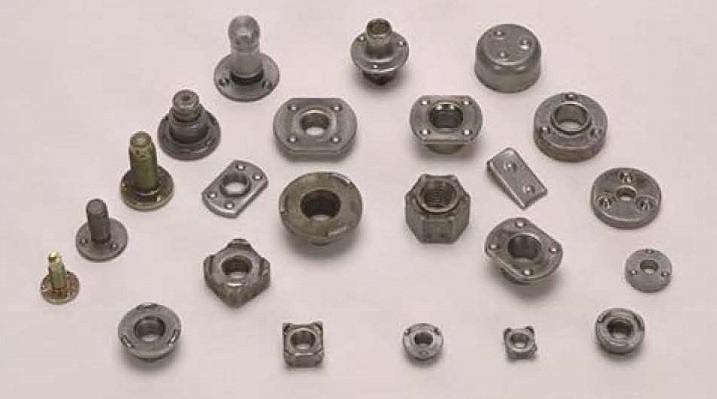In this scenario there are two possibilities:
1. The weld nut has come off.
2. The weld nut is still adhering the part.
In either case the weld nut projection geometry has been altered. The Question is what should be done to correct for this?
In Case # 1 the nut should be scrapped and new weld nuts welded to the part. This may require some refinishing of the weld blank at the weld location prior to rewelding. A clean smooth surface is desired prior to rewelding. Additionally, a process adjustment may be required to make an acceptable weld.
In Case # 2 this is a reprocess or repair. The only acceptable repair the Detroit-3 have ever considered is a form of arc weld to the exterior of the nut. This could be a MIG-braze if the metal is thin. If thicker a GMAW may be employed. A reweld would never be acceptable. There are too many variables to overcome to achieve an acceptable weld.

ASSORTED WELD NUTS
The reason that a reweld is opposed is due to the immense increase in weld surface area. This dictates a large increase in amperage and weld time.
If one were to try to reweld a part in Case # 2 they would be trying to weld the entire face of the weld nut to the workpiece. If the equipment is not sized sufficiently many problems can arise.
• Exceed the equipment thermal limits
• Damage the nut threads as the nut will soften at cherry red heat
• Alter the base metal properties due to the large heat affected zone
• Inconsistent weld quality, based on push-off force.
Reference: AWS C1.1 Recommended Practices for Resistance Welding

